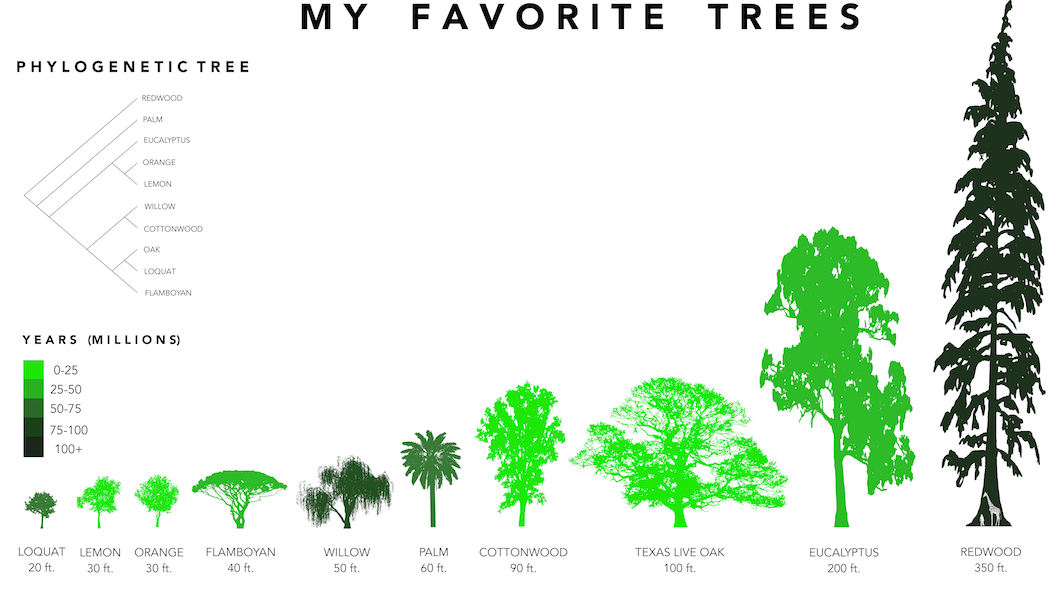Tree of Trees
Arbourtrary Visualization
Throughout my life, I've spent hundreds of hours climbing all varieties of trees. There's nothing quite like the smooth feeling of acension, leaning to hang with the wind and the leaves and the sun. At Stanford, I had the amazing luck to be in a place with hundreds of types to climb. Every year, I gathered loquats, oranges, lemons and avocados from the campus and spent bright afternoons reading the works of great poets: Langston Hughes, Stephen Dunn, Maya Angelou, Walt Whitman, and Seamus Heaney among others.
Upon realizing how little I knew about the origin of trees or how modern species are related to each other, I decided to do a small project to learn more. I chose 10 of my favorite species of trees that have been important in my lifetime. These were the Quercus virginiana (Texas live oak), Delonix regia - (flamboyan), Salix babylonica - (willow), Roystonea borinquena - (palm tree), Eucalyptus globulus - (eucalyptus) Eriobotrya japonica - (loquat), Citrus limon - (lemon), Citrus orange - (orange), Populus deltoides - (cottonwood), and Sequoia sempervirens - (redwood).
